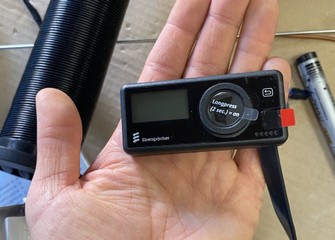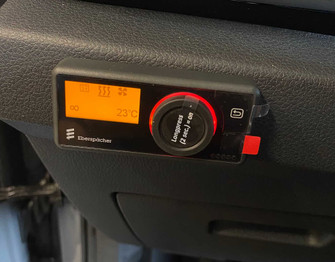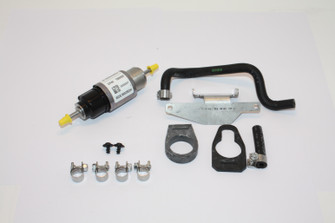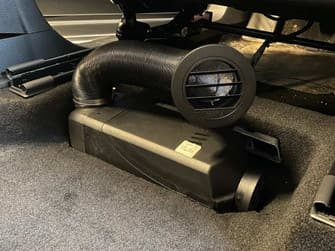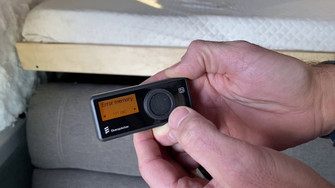Choosing a Van Roof Vent
Posted by Heatso on 5th Apr 2022
No matter the size of your van conversion, you will always need fresh air in your cabin. A good campervan vent extracts moisture, removes odors and pollutants, and ensures that you have fresh air at all times.
CHOOSING
A VAN ROOF VENT
CAMPERVAN VENTILATION
No matter the size of your van conversion, you will always need fresh air in your cabin. A good campervan vent extracts moisture, removes odors and pollutants, and ensures that you have fresh air at all times.
Managing heat and humidity is crucial when living in a van. Heat from the sun and excess moisture generated by humans, pets, cooking, showering, and even burning propane, can attract mold and mildew. Also, everyday activities can cause unpleasant odors and introduce pollutants into the air.Humidity and foul odors, combined with hot weather, can create quite an unpleasant environment to live in.
Thankfully, all of this can be prevented with an appropriate campervan ventilation system. In this guide, we’ll go over the fundamental parts of choosing a van vent that’s right for you. So read of if you want to install the perfect van ventilation system in your motorhome.
WHAT IS A VAN ROOF VENT?
A campervan roof vent brings in fresh air from the outside and gets rid of the hot, humid air inside. In essence, it is an opening in your roof with a built-in fan that pushes the air around, encouraging active air circulation.
A high-end fan such as a MaxxAir MaxxFan Deluxe can have an integrated rain cover and even a remote control, removing any manual labor from managing the climate in your motorhome.
WHY YOU SHOULD INSTALL A VAN ROOF VENT?
There are three main reasons that make a good ventilation system absolutely vital for any campervan:
Ventilation is a great way to regulate the internal temperature of the van, and bring in clean, oxygen-rich air.
A roof vent helps reduce humidity, preventing condensation and mold from forming inside your cabin.
Finally, good air circulation prevents stale odors and pollutants to stay in the air, creating a more pleasant and safe environment.
Temperature Control
As the sun warms the van, as you breathe, move around, cook, and shower, the air naturally gets warmer inside the cabin. If not vented out, this can make staying in the van quite unbearable.
Because hot air is less dense than cold air, hot currents rise to the ceiling and cold air naturally sinks to the floor. This means that the roof of your campervan is the perfect place to install a ventilation fan, as it can more effectively push out the hot air from the van.
Ideally, you want two points of ventilation for proper air circulation. One van vent pulls in fresh air, the other one pushes out hot air. This way, you’ll ensure that you have oxygen-rich air any time of day, creating a more comfortable environment. Stuffy air can cause headaches, make it harder to focus, and even cause trouble sleeping.
Moisture and Condensation
According to a study by the National Center of Biotechnology Information, the average person exhales approximately 80 milliliters of water vapor every hour. Activities such as cooking (especially boiling), taking hot showers, and simply washing your hands, can all drastically increase the humidity of the air.
Excess moisture in the air condenses on cold smooth surfaces like windows and exposed steel and can cause a lot of unpleasant problems. A warm, moist environment is ideal for mold and mildew growth, which, apart from being unhygienic, can cause serious respiratory problems and allergic reactions.
A single campervan fan can produce enough air circulation to get rid of any excess moisture in the air. Installed above the kitchen sink or in the bathroom, a simple MaxxFan Dome can make a major difference, and prevent any excess condensation and mold growth.
Odors and Pollutants
A lot of our everyday activities can cause unpleasant odors. Human perspiration, passing gas, a wet dog after a swim, overdue food, unwashed dishes, and dirty laundry in an enclosed area can introduce some pretty bad smells.
Although we can get used to smells pretty quickly, it’s still more pleasant to breathe in fresh air. Additionally, if one of the travelers falls ill and you need to stay on the road, it is absolutely vital that you have proper air circulation. Good ventilation will reduce the risk of others in the van catching it, and can substantially speed up the sick person’s recovery.
If you’re living in a van with multiple people or with a pet, we suggest you get a van roof vent that provides active ventilation. The community favorite and hands down the most popular option for most vanlifers is the MaxxAir MaxxFan, which provides a great amount of airflow. It’ll ensure that any odors and pollutants get cleared out.
PASSIVE AND ACTIVE VENTILATION
Now that you’re sure that you need good ventilation, it’s time to decide which type is for you. There are two main types of ventilation you can choose from: active and passive.
Passive Campervan Ventilation
Passive ventilation uses the natural air currents in your van to provide a basic level of circulation. Think of opening a window while you’re on the road, or cracking open and keeping the door open when staying somewhere. As stale air leaves the camper, fresh air rushes in to replace it, and voila – you have passive air circulation.
Passive air ventilation is for the most part completely free and doesn’t require any power or modification from your van. However, if it’s a hot day with little-to-no wind, the temperature inside and outside your van will be the same. This won’t provide enough natural air movement, and the air circulation won’t be as efficient.
Additionally, passive ventilation can cause some security concerns. When staying in urban areas or public campsites, cracking a window for the night can increase the risk of a break-in. Wind deflectors on windows can provide some security from prying eyes, but it’s still a risk you should be willing to take.
Active Campervan Ventilation
The most popular form of getting fresh air in the cabin is using active ventilation. A roof vent with a built-in fan or a dome wind-powered vent have the added benefit of pushing the air around, even if there’s little wind outside. This means that you can have effective air circulation in your van even when staying at a campsite.
Vents work best in pairs to provide the most reliable way to circulate air. You can install a louvered air vent in the wall close to the floor, and a MaxxAir fan on the roof for the best results without breaking the bank. If you have the budget, installing two active fans on the roof will provide the best results, but this is generally unnecessary in small to medium-sized vans and RVs.
CHOOSING THE RIGHT CAMPERVAN VENTILATION SYSTEM
Where to install
Air moves around on convection currents. Essentially, this means that hot air rises while cool air sinks to the floor. Using this principle, you can plan out where you’d like the cool air to come in, and the hot air to come out.
Having a point down low to pull in fresh air and a vent in the roof to push out the stale air will create proper circulation. It doesn’t have to be exact, but think about where in your van do you generate the most moisture and heat. Try and position the fan that will be pulling hot air out somewhere in that area.
Ventilation efficiency explained
Cubic meters per hour or minute (m3/h or m3/min) only applies to active ventilation systems. It is the volume flow rate of stale air the vent is capable of pulling out.
However, similarly to air conditioning, the space needs to be sealed for the fan to work most effectively. So if you have a window or side door open, the rate at which the fan works will be compromised.
Essentially, the faster the more cubic meters can be ventilated, the more effectively the air in your van will be circulated. But a higher number doesn’t automatically mean a better ventilation solution.
CHOOSING AN ACTIVE VENTILATION SYSTEM
Roof vent fan
A MaxxAir roof vent fan is a highly popular option. It provides active ventilation thanks to a built-in fan. It effectively removes excess moisture, unwanted odors, and pollutants from the air, and substitutes them for fresh air. These vents can also come with remote control capabilities for additional comfort.
Wind-powered fan
A dome wind-powered fan like the MaxxAir Dome has some unique benefits. It’s much easier to install and takes up significantly less space than a full-size vent. At the same time, it’s perfect for reducing humidity and fighting odors. Nonetheless, it provides minimal ventilation and is best suited for localized ventilation such as in the kitchen or bathroom.
Air Conditioning
Although in a completely different category, it’s important to understand the difference between ventilation and air conditioning. Unlike a roof vent, an AC unit recirculates the air in the cabin, without pulling in fresh air from the outside. It cools the air down, allowing you to reach lower temperatures than with ventilation, and removes moisture more efficiently. An AC is best suited for hotter climates, where ventilation may not be as effective.

